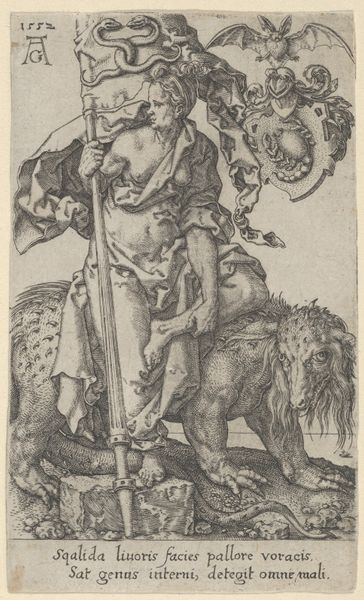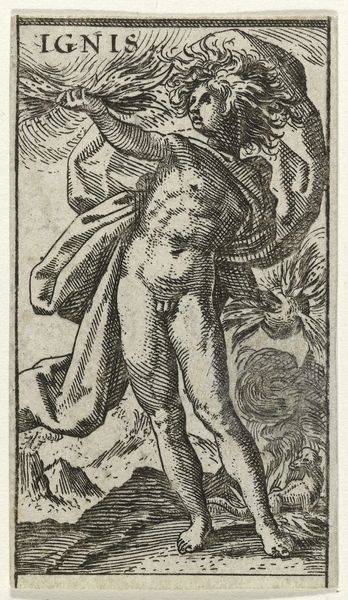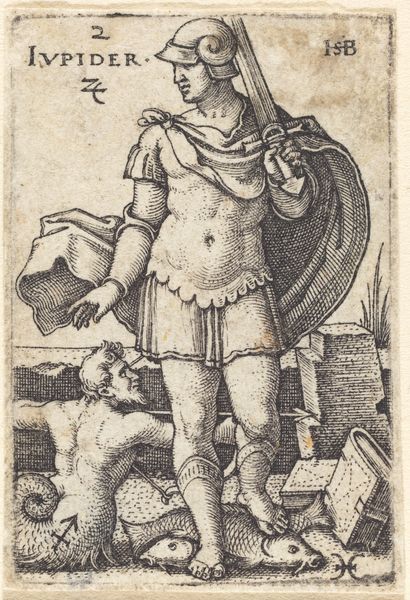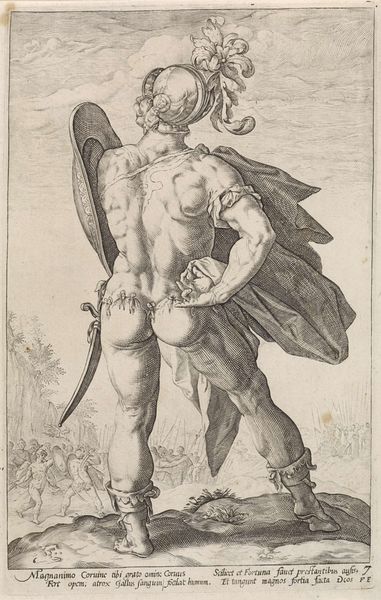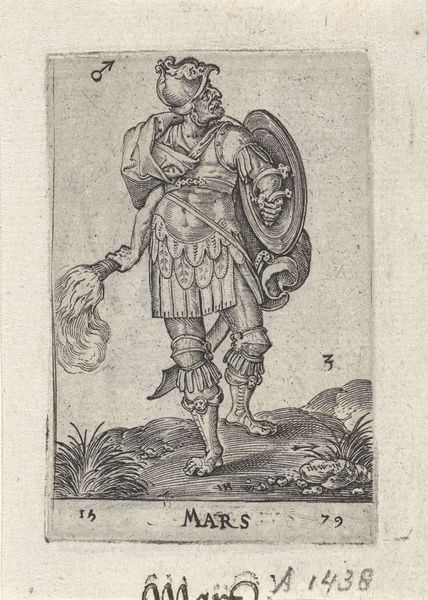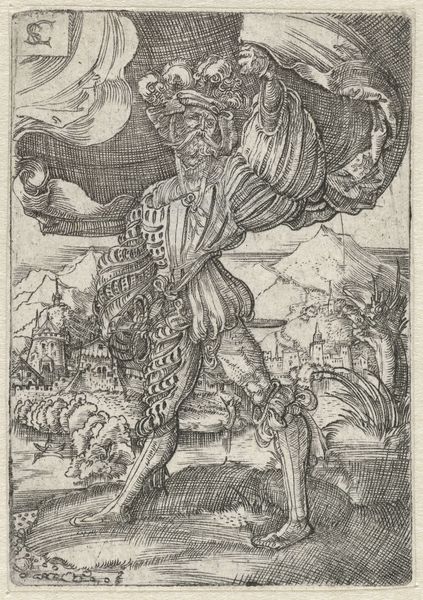
print, etching, engraving
#
portrait
#
allegory
# print
#
etching
#
figuration
#
11_renaissance
#
history-painting
#
northern-renaissance
#
engraving
Dimensions: height 84 mm, width 49 mm
Copyright: Rijks Museum: Open Domain
Curator: Immediately I see a rather serious figure, strong lines etched to convey a figure burdened with...something? It's an etching, isn't it? Editor: Indeed. This is "Jupiter," an etching and engraving dating to 1528 by the artist known only as Monogrammist IB, currently held in the Rijksmuseum collection. Curator: Monogrammist IB...anonymous artistic expression, perhaps subversive commentary woven within mythological tropes? Editor: Perhaps. This print presents Jupiter in full classical armor, complete with a sword and shield. His rather imposing physique dominates the foreground, but you can also glimpse a cityscape in the distance. Curator: His stance, with the city behind, makes him seem less divine and more...protective. Given the social unrest of the Reformation era, might Jupiter function here as an allegory for earthly authority, for the very concept of governance under scrutiny? Editor: The artist probably aimed at social commentary. Imagery, even classical iconography, never exists in a vacuum, right? But I also see this work through the lens of Renaissance printmaking. Consider its role within a burgeoning market for art and knowledge, specifically. Reproductions like this made art and ideas more accessible to a wider audience. Curator: I see that the shield appears to bear an eagle, a symbol with a multitude of layered interpretations - Roman imperial power, the Holy Roman Empire, perhaps even anxieties about the centralized power structures? This connects the piece to conversations around identity and self-determination of that period. Editor: Precisely. The very act of mass-producing this image has a political dimension. It democratizes a classical figure and potentially invites critique or even satire from viewers engaging with those readily available prints. Curator: And placing him just outside the borders of the cityscape evokes feelings about social structure as the cities experienced plagues and other major social upsets. Even his attire which is militaristic can be interpreted as having social meaning for those who have a voice in governance and for those who do not. Editor: Yes, the complexities in interpreting art from past social-political dynamics creates endless discussion that lead to continuous discoveries about our shared human experience.
Comments
No comments
Be the first to comment and join the conversation on the ultimate creative platform.
